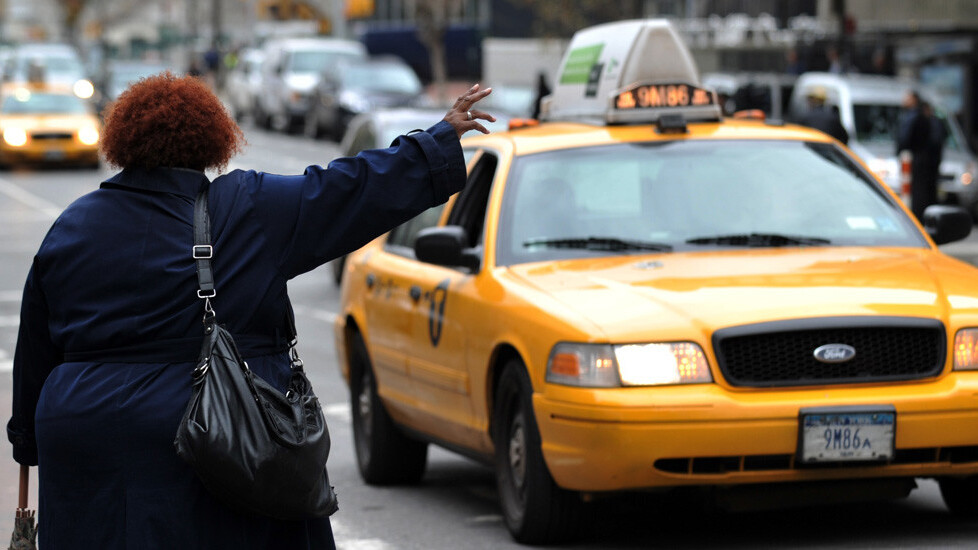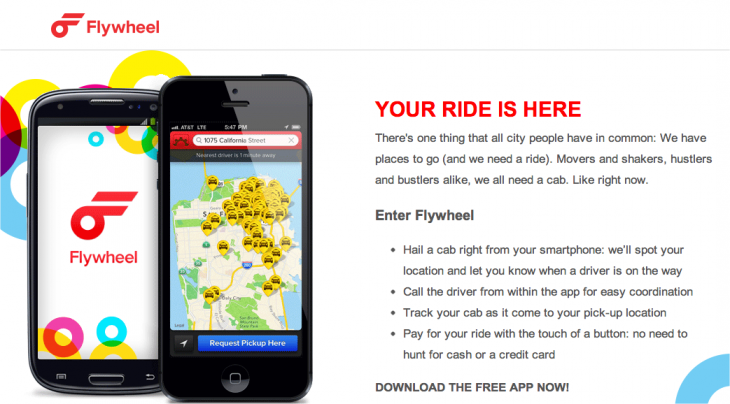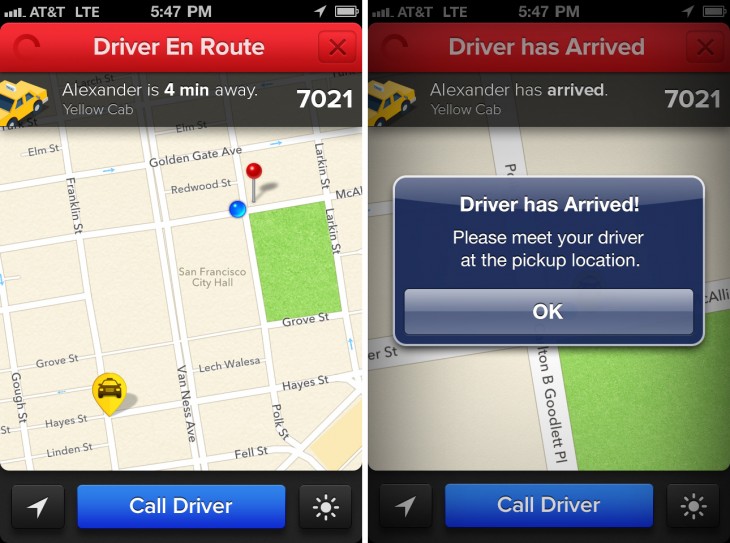
Cabulous, a service that allows users to summon taxis to their location, has undergone a rebranding process and is now known as Flywheel. To coincide with this news, the company has released a brand new mobile application with all the features that users have come to love and expect, but now with a fresher interface, a new feature called the Ride Experience platform, and more.
Since it started providing taxi service assistance two years ago, the company has over 2,000 taxis around the country using its service, of which a third are based in San Francisco. Not bad for a service that has to contend with a whole host of issues in the industry, including competitors like Uber, Lyft, Hailo, GetTaxi, Taxi Magic, and others. Of course, the regulatory concerns that have haunted some of the services using mobile technology has got to weight a bit on the company’s mind.
But Flywheel isn’t too worried about that. Why? Because it’s integrated directly with the cab fleets. In addition, it says that it uses the in-cab meter to generate the fare, not relying on the app to record and display the information. Because of the regulatory framework it says it has created, the company says that it will be able to work with fleets more quickly and it will help them continue its growth “unabated”.
What led the company to change its name? CEO Steve Humphreys says that it’s to help move the perception that it’s only focused on cabs. The fact is that while that’s the mode of transportation it focuses on now, it won’t be in the future — Humphreys says the company’s aspirations are beyond cabs and it wants to provide services for all types of vehicles, including shuttles, town cars, and pedicabs — all of which are currently in pilot programs.
Another reason for the rebrand? People outside the US don’t necessarily understand the terminology. Flywheel wanted something that would be useful worldwide.
Today, users will find a new update to the service’s mobile apps for iOS and Android devices. Flywheel aimed to improve the app so that it’s more reliable while also making it more convenient for both the driver and the rider. It all starts with a fresh interface for the app. From there, users will also find that it now accepts in-app credit card enrollment, along with displaying vehicle arrival times. Unlike past versions, the updated app now contains cancellation fees — should either the driver or the rider cancel the request after 30 seconds, a fee is charged.
Flywheel has also added its Ride Experience platform, which is essentially taking a page out of Uber and Lyft’s playbook. What it does is evaluate the driver’s behavior and adapting itself to the needs of the rider. If the driver is too busy or performs poorly, then the ability to hail them might be temporarily postponed for a while.
In a statement, the company says:
Our goal is to use emerging technology such as mobile payments, real-time geo-location and dispatch integration to modernize the industry, improve efficiency and lower operational costs. All of these contribute to an improved and less crowded urban experience.
Currently, aside from the United States, Flywheel is operating out of Barcelona, Santiago, and Cape Town — although these are pilot programs. Humphreys says that he plans to go international next year though. But in the US, it has hit critical mass in cities like San Francisco, San Diego, Miami, San Antonio, and several mid-size cities — the goal is to be in 2,000 cities by the end of the first quarter in 2013.
Humphreys says that the company will be making money through a number of different ways, including charging a convenience fee of $0.60 for mobile payments, taking a portion of the cancellation fees, among others. He says that he hopes to take on average $1 per ride. Cab drivers receive 100% of the metered fare.
To date, it has raised $8 million in funding from investors such as RockPort, Shashta Ventures, Sand Hill Angels, and members of the Band of Angels.
Photo credit: STAN HONDA/AFP/Getty Images
Disclosure: This article contains an affiliate link. While we only ever write about products we think deserve to be on the pages of our site, The Next Web may earn a small commission if you click through and buy the product in question. For more information, please see our Terms of Service.
Get the TNW newsletter
Get the most important tech news in your inbox each week.






